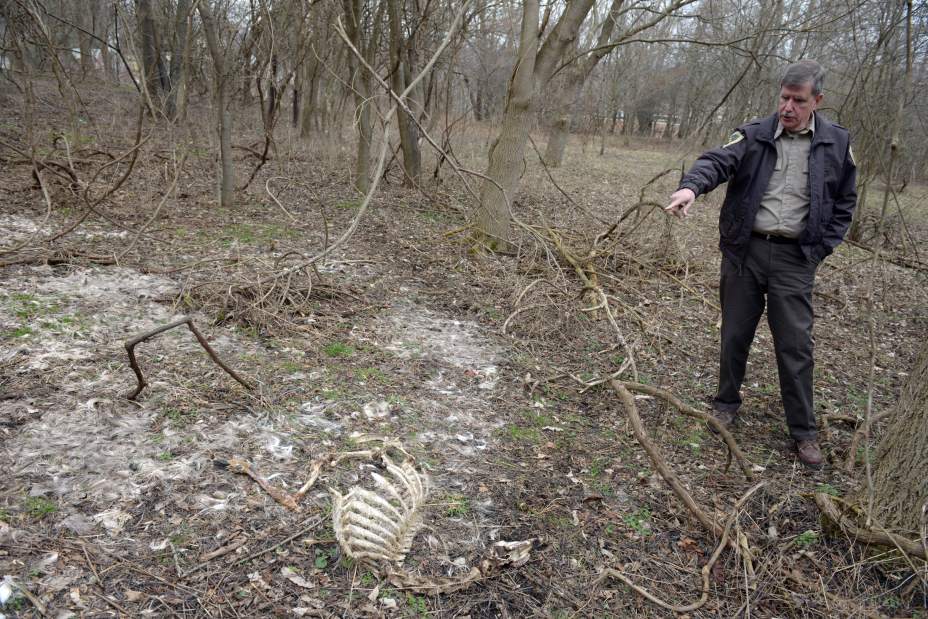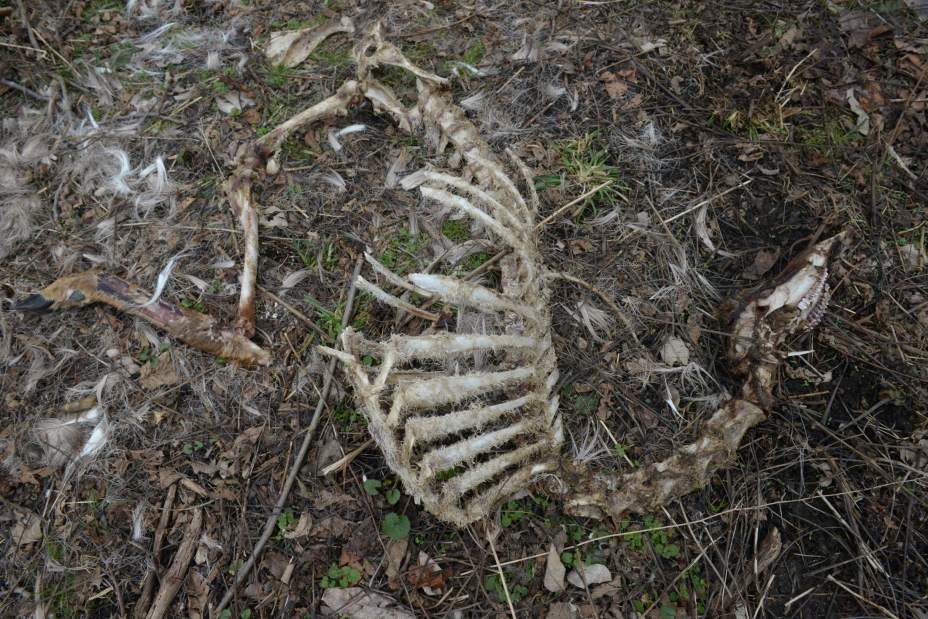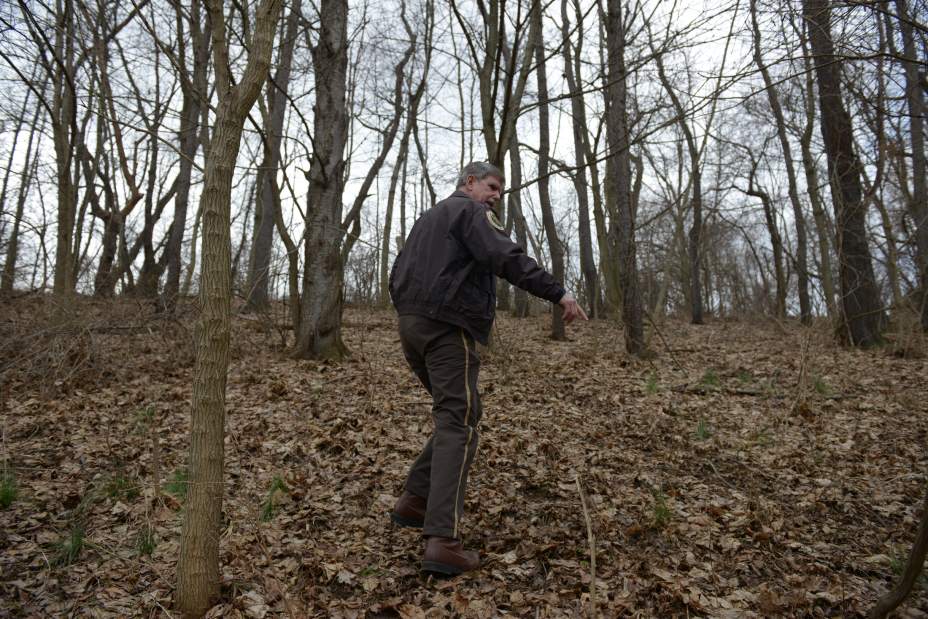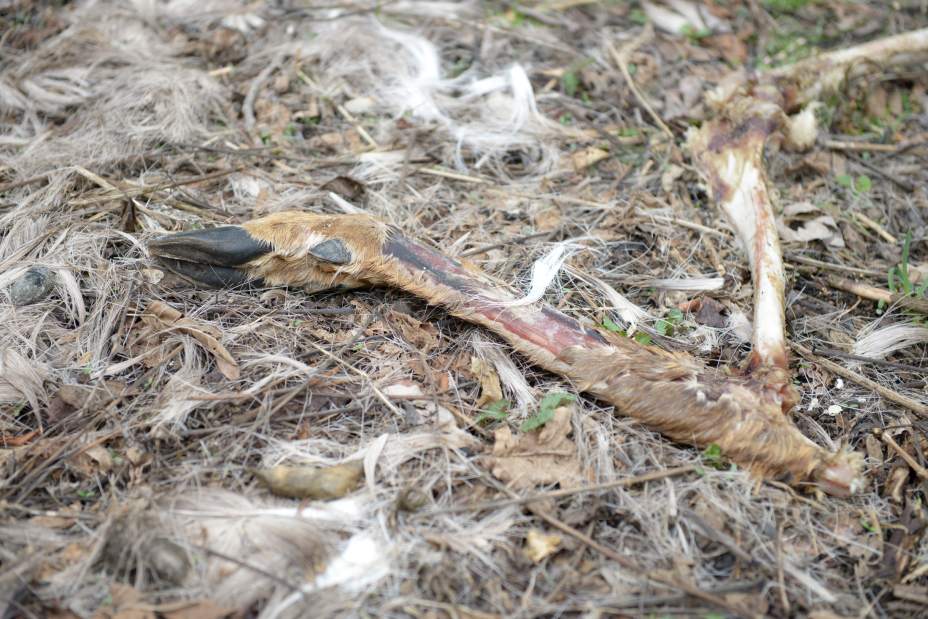Though plentiful, coyotes unlikely to ease Mt. Lebanon's deer population
In the tangle of trees, vines, broken branches and brush between Myrtle Elementary School and the Mt. Lebanon Golf Course, South Hills Cooperative Animal Control Officer Roy Hayward pointed to the scattered tufts of hair surrounding a deer skeleton, noting how pieces farther away could have been dragged by coyotes.
With a diet consisting of fawns, mice, rats, chipmunks, squirrels, turkeys and almost anything else they can catch and kill — including small pets — the Eastern coyote could do well in the wooded hills at the edge of Mt. Lebanon and Castle Shannon, Hayward said.
Whether coyotes can help much with Mt. Lebanon's deer problem is another question.
“This is a nice area: You've got a lot of tangle, and when it starts to get green, you're not going to see very far at all,” Hayward said.
His agency, which is based in Mt. Lebanon and covers 12 communities around the South Hills, gets at least one report of coyotes a month. He noted there never have been reports of coyotes attacking humans in Pennsylvania.
Mt. Lebanon Golf Course manager Dave Boal said there had only been a couple of coyote sightings at the nine-hole course over the past three years, and staff have found the remains of three or four fawns in the same period. Many residents of the surrounding neighborhoods of two-story, red-brick houses, ranging from modest to sprawling, said Tuesday that they hadn't heard or seen coyotes there.
“We haven't seen them much. ... We're here during the daylight, and they hunt after dark,” Boal said. “We know they're out there.”
The Pennsylvania Game Commission allows licensed hunters to kill coyotes in any season, but given their adaptability, the availability of prey and the difficulty of hunting in urbanized communities such as Pittsburgh and Mt. Lebanon, coyotes are likely to remain long-term residents.
“Coyotes are inhabiting pretty much every corner of the Commonwealth,” said Tom Fazi, spokesman for the Pennsylvania Game Commission's Southwest region. “They're just super adaptable. They can live in urban areas or the deepest forest.
“Nobody can control coyotes. Anybody who tells you they can, they're kidding you.”
Over the past decade, the adaptable Eastern coyotes — a cross between the Western coyote and the timber wolf — have moved into nearly every part of Pennsylvania, Fazi said.
“I live in Upper St. Clair, and I've had several in my backyard right across from South Hills Village,” Hayward said. “I tell people if they're concerned when they're putting Furball out, make sure they rattle the door, turn on their lights, maybe stand outside a little bit with Furball,” he said in reference to a family pet.
Although young deer can be part of their diet, coyotes alone won't suppress deer populations in urban and suburban areas, said Duane Diefenbach, director of Penn State University's Cooperative Fish and Wildlife Research Unit.
“There are so many food resources available that coyotes do not need to depend on deer to survive,” Diefenbach said. “Coyotes prey primarily on fawns, so once a deer survives to about 6 to 8 months of age, its probability of dying from coyote predation is very low — not zero, but low.”
Coyotes in Pennsylvania are generally loners, although there will be the occasional sighting of a mother with an older pup. They are very wary of humans and usually avoid them, but exposure to human scents from rooting through garbage or hunting around bird feeders could make them more accustomed to people's presence.
In the North Hills, residents of Ross met Tuesday night with game commission representatives to discuss coyotes, having seen and heard an increasing number of both coyotes and deer in their township.
Matthew Santoni is a staff writer for Trib Total Media. He can be reached at 412-380-5625 or msantoni@tribweb.com.




